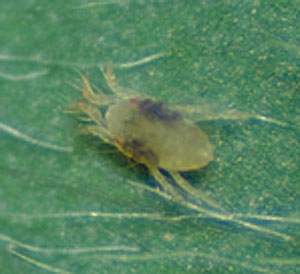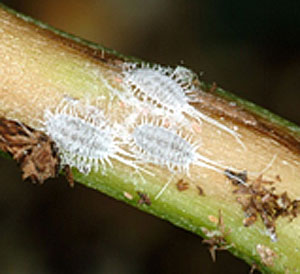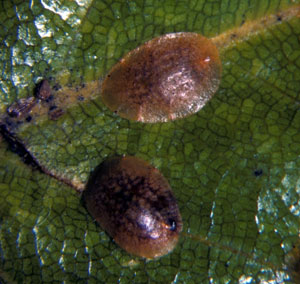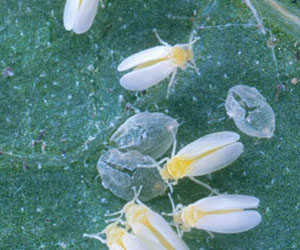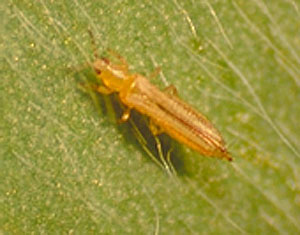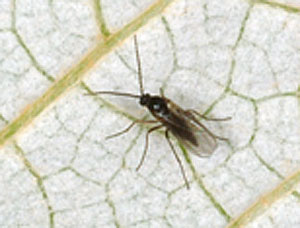Several mite species attack plants indoors, often causing severe injury. Most common among them is the
two-spotted spider mite. They have a wide host range, so very few plants are safe from attack. Adult spider mites are about 1/50 inch long and are usually found on lower leaf surfaces. Feeding injury on many plant species produces light-colored, speckled or mottled areas on leaves. This is called stippling. Webbing is also produced. Severe spider mite infestations cause leaves to dry and fall from the plant. At 75° F, about two weeks are required for mites to develop from egg to adult.
Other important mites include the broad mite and cyclamen mite. Because these mites are about 1/100 inch long, infestations are recognized by plant injury symptoms rather than by seeing the mites. Most feeding injury occurs on young foliage or in the buds, where injury is characterized by thickened and brittle foliage, with leaf margins cupped downward and stunted. Many of these symptoms are characteristic of injury by phenoxy-type herbicides or virus infection, so infestations can go unnoticed for long periods of time. Since these mites are attracted to dusty conditions, removing dust from the plants with soapy water and a soft cloth (which will also remove the mites) will help discourage their presence.


